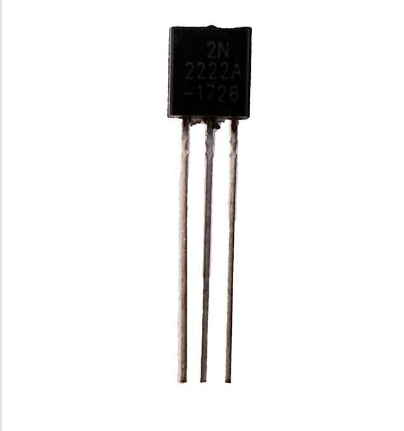Transistors are fundamental components in electronic circuits, serving as the building blocks for a wide range of applications. Among the various types of transistors, NPN transistors are commonly used in electronic devices and circuits. In this guide, we will delve into the key components of NPN transistors, including the collector, base, and emitter, and explore their role in NPN transistor circuits.
The NPN transistor, which stands for "negative-positive-negative," is a type of bipolar junction transistor (BJT). It consists of three layers of semiconductor material: the emitter, base, and collector. Understanding the functions of these components is essential for designing and analyzing NPN transistor circuits.
The collector is the region of the NPN transistor that collects the majority charge carriers (electrons in the case of NPN transistors) from the base. It is typically the largest region of the transistor and is doped to have a higher concentration of charge carriers compared to the base region. The collector current, which flows from the collector to the emitter, is controlled by the base current. In NPN transistor circuits, the collector is connected to the positive supply voltage, and the collector current is determined by the voltage applied and the load connected to the collector terminal.
2. NPN Transistor Base:
The base of an NPN transistor is the control terminal that regulates the flow of current between the emitter and collector. By applying a small current or voltage to the base, the transistor can amplify a larger current flowing from the collector to the emitter. The base current controls the collector current, making the NPN transistor an essential component for signal amplification and switching applications. In NPN transistor circuits, the base is typically biased to a specific voltage level to ensure proper transistor operation.
3. NPN Transistor Emitter:
The emitter is the region of the NPN transistor from which the majority charge carriers (electrons) are emitted into the base region. It is doped to have a higher concentration of charge carriers compared to the collector region. The emitter current, which flows from the emitter to the collector, is controlled by the base current. In NPN transistor circuits, the emitter is connected to the ground or reference voltage, and it serves as the terminal through which the output current is delivered to the load.
Understanding the interplay between the collector, base, and emitter is crucial for designing NPN transistor circuits. By controlling the base current, the NPN transistor can act as a switch or an amplifier, enabling a wide range of applications in electronic devices and systems.

NPN Transistor Circuit:
In NPN transistor circuits, the arrangement of the collector, base, and emitter terminals determines the functionality of the transistor. Common NPN transistor circuits include common-emitter, common-base, and common-collector configurations, each offering unique advantages for specific applications.
In a common-emitter NPN transistor circuit, the input signal is applied to the base terminal, while the output is taken from the collector terminal. This configuration provides voltage amplification and is commonly used in audio amplifiers, radio frequency circuits, and other signal processing applications.
In a common-base NPN transistor circuit, the base terminal is the input, and the emitter terminal is the output. This configuration offers current amplification and is often used in high-frequency applications, such as radio frequency amplifiers and oscillators.
In a common-collector NPN transistor circuit, the input is applied to the base terminal, and the output is taken from the emitter terminal. This configuration provides impedance matching and voltage buffering, making it suitable for impedance transformation and signal isolation in electronic circuits.
Transistor Gate Source Drain:
While the discussion above primarily focuses on NPN transistors, it's important to note that transistors are not limited to just bipolar junction transistors (BJTs). Field-effect transistors (FETs) are another essential type of transistor, commonly used in integrated circuits and electronic devices.
In FETs, such as metal-oxide-semiconductor FETs (MOSFETs), the equivalent components to the collector, base, and emitter in BJTs are the gate, source, and drain, respectively. Understanding the characteristics and operation of FETs is crucial for designing and analyzing circuits in modern electronic systems.
In conclusion, NPN transistors are essential components in electronic circuits, offering versatile functionality for amplification, switching, and signal processing. By understanding the key components of NPN transistors, including the collector, base, and emitter, as well as their role in NPN transistor circuits, engineers and enthusiasts can harness the power of transistors to create innovative electronic designs and systems. Whether it's designing audio amplifiers, radio frequency circuits, or digital logic gates, NPN transistors play a pivotal role in shaping the future of electronics.
